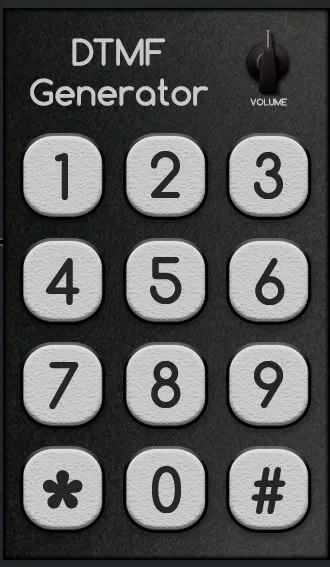A long time ago I ran into a situation in a session at my work where I needed to dial a code on a phone patch, but couldn’t easily enter the code. I was connected to a phone conference via a Telos Zephyr which was all the way on the other side of the studio. I had to communicate what numbers to press and when over a separate phone call to someone in the machine room. Since then we’ve significantly streamlined things and have a million other tools at our disposal, but at the time I took that as an excuse to build a plugin to assist.
Instead of manually pressing buttons, I realized I could just send standard DTMF tones down the line to “dial” whatever I wanted. DTMF (Dual Tone Multi Frequency) tones are simply two specific frequency sine tones playing at the same time. That’s it. I remember finding that out and being amazed how such a simple signal was so vital for human communication. Something built in the 1960’s that still remains unchanged, yet completely relevant and necessary even within today’s modern communication tech.
Anyways, I had a dusty copy of SynthEdit at home that I had tried before but gave up on. I was originally trying to build a convolution reverb with it, but it proved a bit more complicated than I was ready for at the time. I figured if all I had to make it do was play two sine tones at once, maybe this time would be different. And it was! There was a simple tone generator I used to map out the various tones required for each button. Making the UI was actually more complicated than building the backbone. This was the result:

Absolutely STUNNING design and ingenious name, right? 😂 I tested it at work the next day and it worked great! My excitement was short lived however. Soon after I built this, we completely changed the way we handled phone patches and this little tool was no longer necessary. So, I forgot all about it! Tonight, I was organizing my plugins (yeah, I’m pretty cool) and came across it. I loaded it up in my much newer DAW and was happy to see it still worked!
I really don’t have any use for it anymore, but I won’t be deleting it off my system. It’s something I’m proud I was able to learn about and build. So now, I’m offering it out for free to the world. Perhaps this might be helpful to someone in a practical or creative sense. Here you go!
I want to be clear, that while I tried my best, I’m certain I didn’t build this plugin in the most efficient way. I probably violated some VST standards and using it now I notice the buttons can sometimes be a little unresponsive. What can I say… it was my first plugin, and I built it in a night! I can’t make any guarantees to the function or the stability of it for you now or in the future, but I hope it ends up in your DAW where you can use it a couple times and forget about it too. 😉